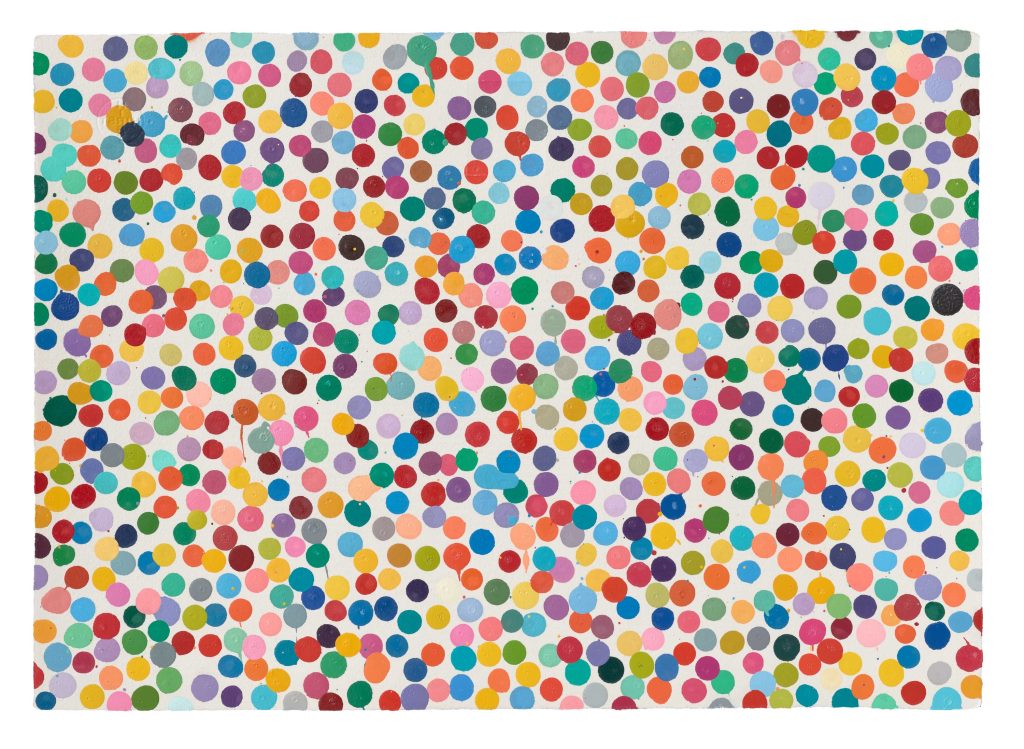WATCH OUR LATEST EDITION OF THE EDUCATED EYE: HOW TO BUY & SELL SMART
In the upcoming fall auctions, there are three exceptional single owner sales that will be composed of a multitude of objects. These three sales are the Paul Allen sale at Christie’s, the Ann & Gordon Getty sale at Christie’s and the Hôtel Lambert sale at Sotheby’s. In order to navigate these three exceptional sales, we hosted a webinar titled The Educated Eye: How to Navigate a Multi-Category Collection at Auction, using the Hôtel Lambert sale as a case study to explore how to make the most of these opportunities.
Join us for a 30-minute in-depth discussion on how buyers can navigate multi-category single-owner sales to identify opportunities and hidden gems within the larger sale context. We will be using the upcoming Sotheby’s Hôtel Lambert auction as an example. Our experts will cover various categories of fine decorative arts and furniture.
SINGLE OWNER SALE HIGHLIGHTS
Hotel Lambert, Une Collection Princiere Volume I – V, 11th – 14th October, Paris & Online
The Ann and Gordon Getty Collection, 10th – 25th October, New York
Visionary – The Paul G. Allen Collection, 9th & 10th November, New York
Tips & Opportunities
EXPLORE NEW ASSET TYPES AND COLLECTING CATEGORIES
Both the Ann & Gordon Getty Collection and the Hôtel Lambert sales have a wide range of objects and an accompanying wide scope of prices. Objects at accessible price points create an opportunity to explore new asset classes and collecting categories. For example, if a collector has a particular interest in Chinoiserie, this is a great opportunity to delve deeper into a sub-category such as enamel ware or cloisonné.
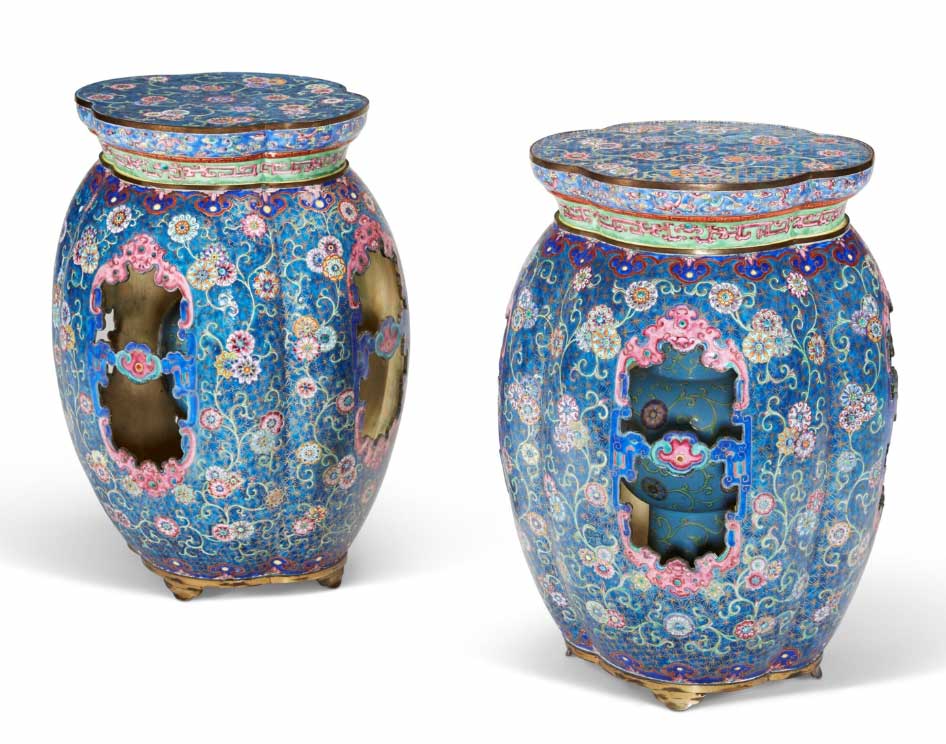
LOOK FOR PIECES THAT ARE FRESH TO THE MARKET
There are a number of pieces in these sales that have been in the market within the last 10 – 15 years. However, as these are single owner sales, there is an opportunity to come across pieces that have not been to market for a generation. For example, this George II Green and Gilt Japanned at Parcel-Gilt Bureau Cabinet last appeared on the market in 1980.
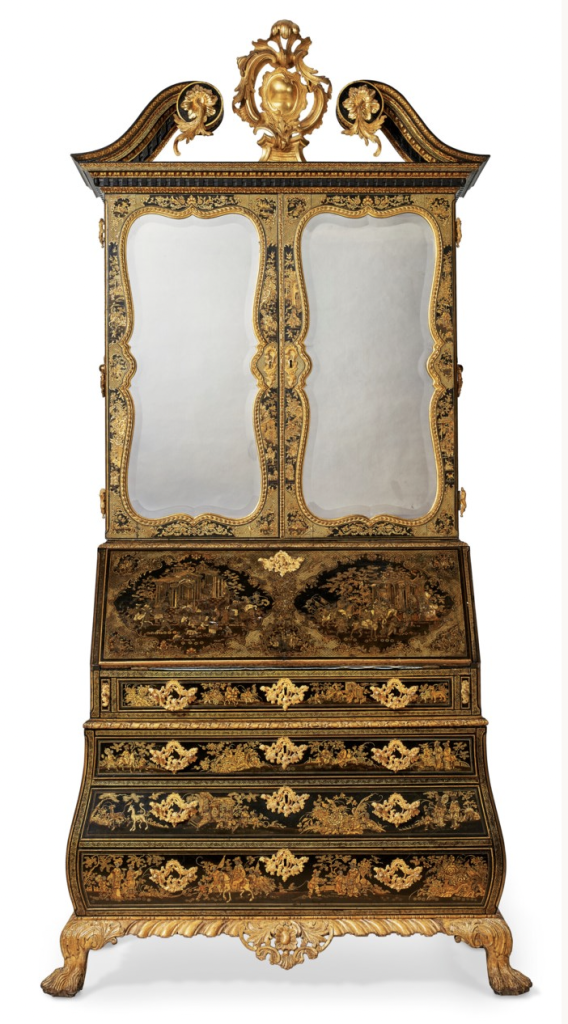
FOCUS ON PROVENANCE
Provenance alone is enough to interest collectors when buying a new piece. Within these sales, there are many objects that have a very rich and deep provenance that should not be missed. This enamel oval dish displaying the Judgement of Moses passed through the Hubert de Givenchy Collection as well as the Yves Saint Laurent and Pierre Berge Collection before ending up at the Hôtel Lambert.
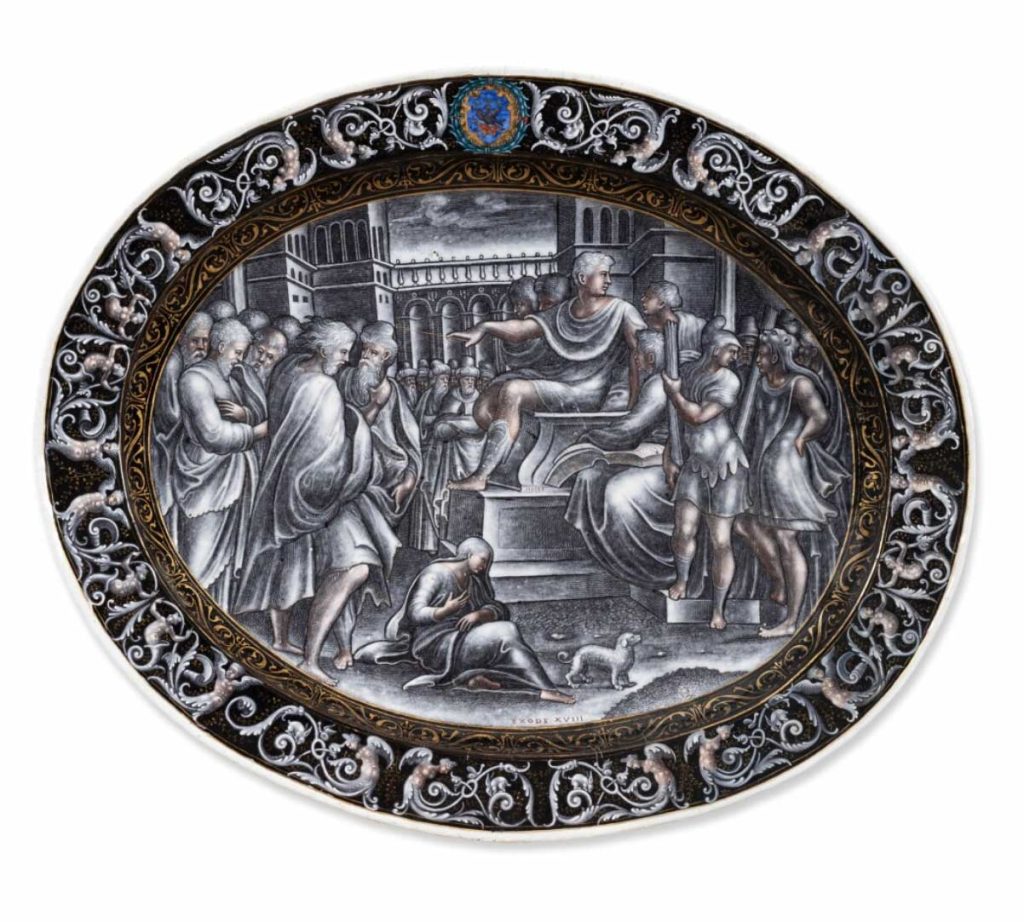
CHOOSE THE RARE, UNIQUE, AND UNUSUAL
Choosing rare and unusual pieces that are unlikely to come up again is a way to ensure you don’t miss out! This gorgeous snuff box has the most unusual leopard print pattern adorning the top and bottom surfaces. Despite the unorthodox patterning, the leopard print fits right into the maximalist fashion of the 1700s.
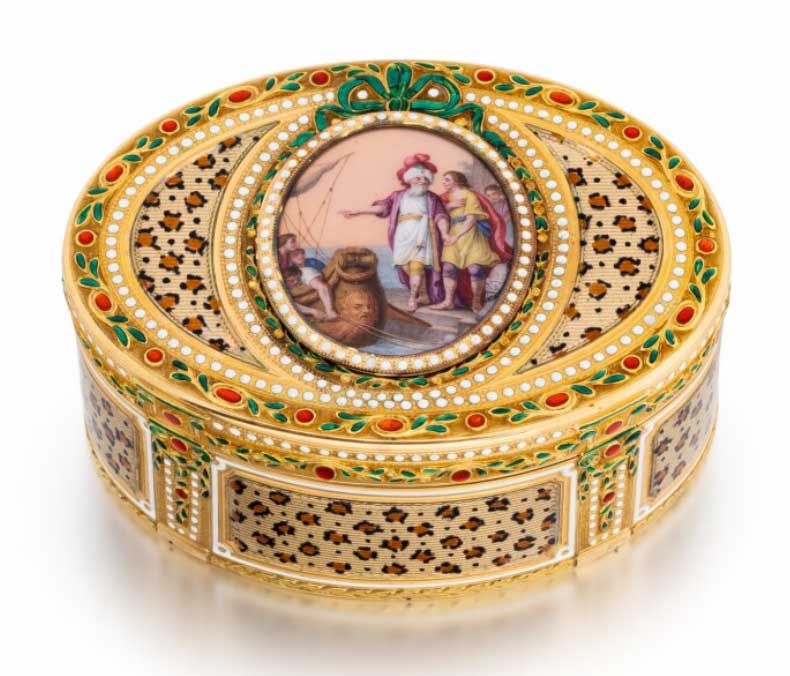
AVOID MULTIPLES AND MORE COMMONLY FOUND PIECES AS THEY TEND TO SELL ABOVE MARKET VALUE IN THESE TYPES OF SALES
FURTHER READING
- The Asking Price: Understanding Value 1
- The Asking Price: Understanding Value 2
- Don’t Go It Alone: Let Us Be Your Auction Sale Advocate
OUR SERVICES
Offering expert Advisory across sectors, our dedicated Advisory and Sales Agency teams combine strategic insight with transparent advice to guide our clients seamlessly through the market. We always welcome the opportunity to discuss our strategies and services in depth.
Few people would question that the threat of climate change is one of the most controversial and impactful subjects of the moment. In a year that saw soaring temperatures and the UK’s hottest summer on record, it has become near impossible to ignore the environmental shifts on our planet. As governments and scientists struggle to implement the necessary measures and precautions, it was only a matter of time until the art world became not only involved, but directly impacted.
Industries such as air travel and fast fashion face steady criticism for their effect on world water and fuel shortages. The art world is not immune to similar implications. As in-person fairs and international travel once more become regular occurrences on our calendar, the environmentally astute remind us that the art world cannot exist in the same pre-covid routine.
Art Museums & Activists Taking a Stand
One of the biggest wake-up calls the art world received in recent months is the wave of climate activists targeting significant artworks at major museums. Over the last summer, activists in Italy, Germany and Britain have staged protests where they affix themselves to some of these countries’ most valuable artworks, including Botticelli’s Primavera at the Uffizi in Florence, the Vatican’s Laocoön and His Sons, and Van Gogh’s Peach Trees in Blossom at the Courthauld in London. With the aim to “protest the fossil fuel madness,” these groups, (most notably the Ultima Generazione in Italy and its counterpart, the Lezte Generation in Germany) protested to bring attention to the climate crisis. Interestingly, the Just Stop Oil and Ultimate Generazione groups are both funded by the Climate Emergency Fund, a Los Angeles-based organization set up by a group of millionaires three years ago. These include some of America’s richest offspring, with Rory Kennedy (daughter of Sen. Robert Kennedy) and Aileen Getty (granddaughter of Jean Paul Getty) listed among the founders.
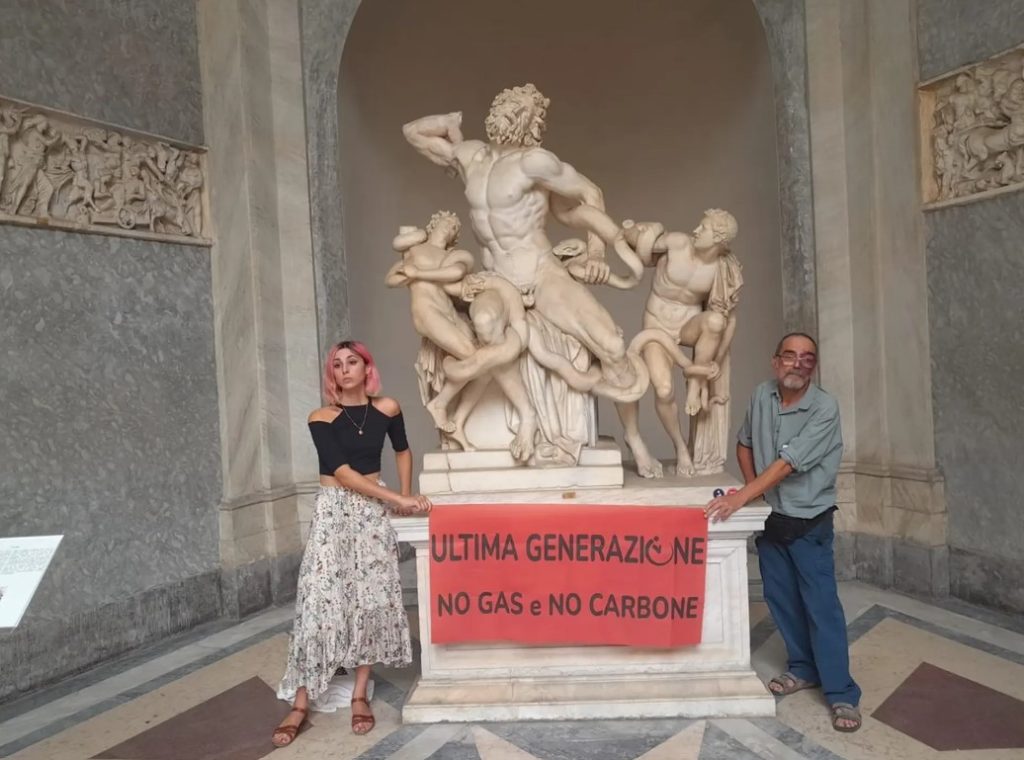
While the protestors have been careful not to attach themselves to the actual artwork, the museums have understandably expressed concern about how far these protestors could go. For instance, the Courthauld had to send the frame for Van Gogh’s Peach Trees out for conservation, leading to three of the protesters being criminally charged in the case. While German and British museums have criticized the actions of the activists as potentially damaging to high-value art pieces, the American Institute of Conservation has spoken out in support, claiming that these groups are merely looking for a way to speak out where international governments are falling silent.
The Impacts of Climate Change Within Art Institutions
Whether they support the protests of climate activists within their spaces or not, art institutions are gradually bringing greater attention to the crisis within their own programs. The Royal Academy Summer Exhibition 2022 was curated around the theme of “Climate” with the chosen artists displaying a range of works which used direct, violent, and often apocalyptic imagery. The exhibition itself received mixed reviews and even some criticism; the Guardian’s Jonathan Jones labelled the show “climate kitsch.” However, it does signify how the museum sector is beginning to show direct awareness for the state of the planet. This most crucially includes adapting their spaces for the future; for example, Florence’s Uffizi Galleries recently revealed plans for a €50 million project, “Boboli 2030,” to protect the historic Boboli Gardens against the effects of climate change. The Storm King Art Center in New York announced a similar $45 million re-design and upgrade to increase biodiversity.
Many galleries also have begun banding together to preserve wildlife and endangered ecosystems. The sustainability New York collective Galleries Commit recently partnered with the artist-led non-profit group Art to Acres to preserve 200,000 acres of landscape near Machu Picchu in Peru. This area has one of the last 1% of cloud forests on the planet, and museums such as MoMA, the Guggenheim and the Hirshorn, as well as organizations and dealers like Artform and David Zwirner, have donated hundreds of thousands of dollars towards this large-scale conservation.

Following in the footsteps of charity Gallery Climate Coalition, many campaigns of this kind are expected to arise with more and more arts organizations taking steps to reduce their carbon footprints. In the last few weeks, calls have been made for the British Museum to cut ties with British Petroleum (BP). Shell and BP previously were two of the biggest investors in British public arts, but over the last five years many major institutions (such as the National Portrait Gallery, Tate, and Royal Opera House) have ended partnerships with the companies over their use of fossil fuels. This most recent call to cull this funding has most notably come from British Museum employees and other institutional staff. In May 2022 there was an unanimous vote at the PCS Cultural Group (a trade union that represents 4,000 UK cultural workers) to end fossil fuel sponsorship. The repercussions for ending such controversial support for museums, which has nevertheless proved vital in the last years of economic hardship, are yet to be seen.
Insuring Art in the Ever-changing Environment
So, what does all this mean for the art collector? Well, the most pressing environmental issue facing the collector today is primarily problems with insurance. As natural disasters — hurricanes, flash flooding, wildfires, etc. — become regular news headlines around the world, the insurance market teeters on a dangerous edge of unpredictability. The transport, storage, conservation, and display of high-value art pieces has become more important than ever with such climate uncertainty, as well as more economically treacherous. As reported by The Art Newspaper, great waves (both literal and metaphoric) began to hit the insurance market in 2017 when a series of hurricanes hit the Gulf Coast in the US, causing insurance industry losses of more than $300 billion. Florida, the state with the flattest land range, is especially at risk with the rise of sea levels. Annual flooding in the state is up an astounding 400% in the last 16 years, and as a result, in 2020 it announced $4 billion in state-wide spending on flood protection.
Insurance Analysts are using climate change data to assess potential dangers to calculate risk factor. It will become increasingly likely that high-risk locations (such as those prone to earthquakes) will see higher premiums for art storage and cause financial implications for collector residencies. Cities such as Miami and Venice, which are long-term hotbeds of the art world and yet some of the most prone to natural disaster, may face significant challenges when it comes to the expansion of galleries or fairs. California and Florida, in particular, while housing some of the country’s wealthiest art patrons, collectors and museums, face the most risk environmentally, with fine art insurance policies becoming immensely difficult to obtain or renew as new restrictions are continually implemented. According to New York-based insurance company Berkley Asset Protection, premiums for fine art insurance coverage are increasing as much as 12%, with the annual cost of California homeowners’ policies rising as high as 40%. While some clients negotiate to have policies exclude natural disasters altogether to reduce cost, insurers warn this is a dangerous gamble, and with the increasing likelihood of annual wildfires and flooding, unlikely to pay off. Indeed, some insurance companies are even imposing deductibles on collectors who reside in particular states or locations, an extra cost which can amount to as high as 10% of total collection value.
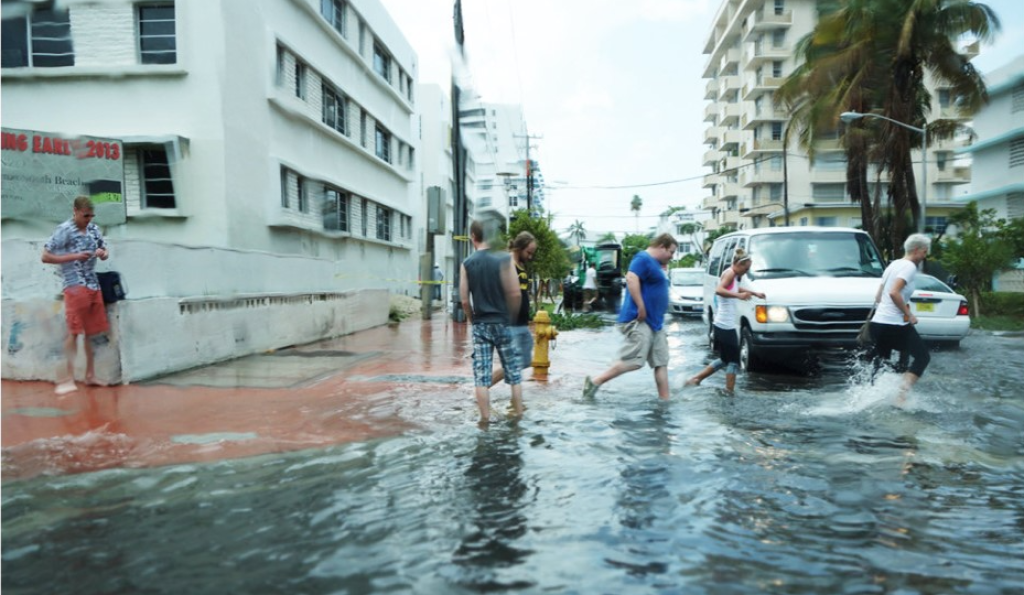
The UK is arguably less prone to extreme natural disasters in comparison to the US or some other European countries. Greece, for instance, is one of the world’s most seismically active countries. However, given the record-breaking temperatures the UK experienced this year which put the nation at a standstill, UK fine art insurance can be expected to put a heavier emphasis on the natural event risk factor in the future. With policy change towards global warming recurrently low on international governments’ agendas, the threat of climate change is still heavy on the art world’s head. Collectors should be sure to have a close conversation with their insurer about climate data analysis, and to assess the environmental situation of their work regularly. Art, much like our planet, is unique and irreplaceable and must be afforded the right protection.
Why You Should Rely on the Expertise of a Sales Agent
when Divesting Tangible Assets
Two weeks ago, a luxury realtor I had not met before rang. She was referred by a mutual colleague and she began by saying, “I was told you are the thought leader for fine art and collectibles … I hope you can help.” I was intrigued and wanted to learn more. The realtor had recently sold a multi-million-dollar home in a luxury market for a client who was experiencing a disruption in her life. The seller’s husband had faced a rapid decline in health, and the couple was forced to sell their dream home. They downsized to an affluent retirement community, moving from an exceptionally large, single-family residence to a much smaller condominium. During this process, the seller queried the realtor for a recommendation on who could monetize the fine art, antiques and other high value collectibles the couple did not plan to keep.
Having no knowledge of the auction market, the realtor completed a quick internet search and provided her client with the name of a local auction house. This is where the trouble began. The seller had agreed to an abbreviated timeline and was anxious to find professionals who could help. Without much consideration for the type of property the auctioneer typically offered or due diligence as to how the auctioneer’s sales preformed, the seller, feeling rushed, entered into a sales agreement at an abnormally high commission rate and began to indicate what she would like to sell. This included fine art that often trades in a global salesroom, fine English and American furniture purchased from dealers in London and New York, as well as more common but valuable décor the owner had procured from a notable interior designer.
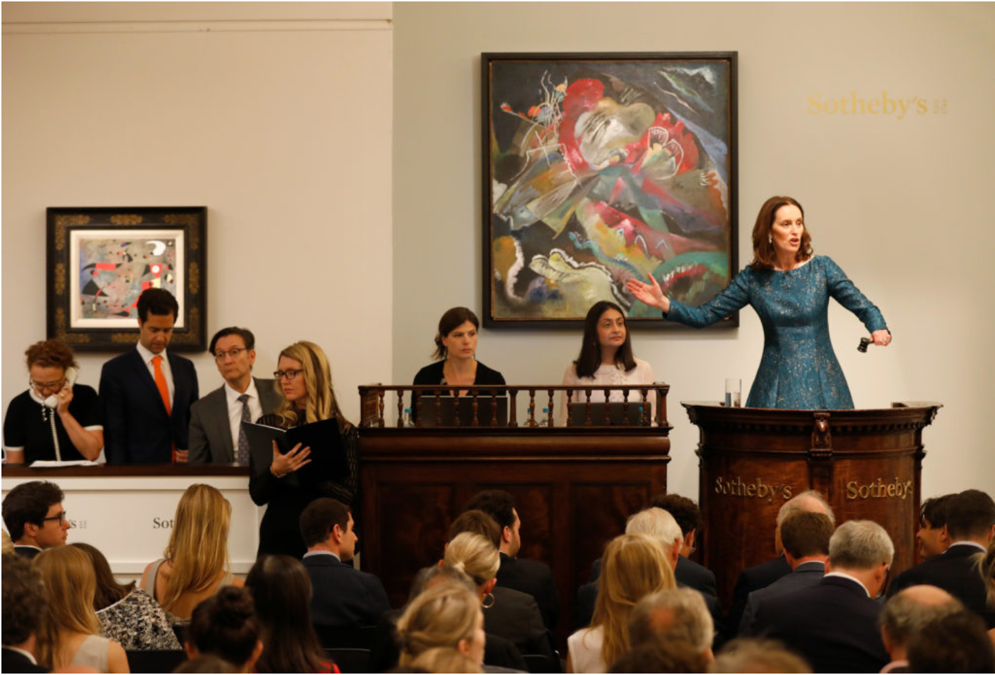
Prior to any auction, it is typical for consignors to review cataloging and approve sales estimates. During this review, not only did the seller discover simple cataloging errors but also was horrified to learn of the auctioneer’s policy to begin every lot at a standard starting bid, no matter the value of the object – leaving the seller extremely exposed to loss. Withdrawing the objects from the auction was not possible, so the seller crossed her fingers, hoped for the best and reluctantly moved forward. As expected, a collection of objects that would total mid-six figures in any regional or national sales room realized a small sum, a third of their potential value. The seller, and rightfully so, was extremely unhappy with the auction house and realtor who made the recommendation. The realtor is concerned there could be forthcoming litigation for referring an unvetted organization to a discerning client and that the client would tell their social and business network about the sales debacle.
This all made me wonder, what should a seller know before engaging with an auction house and how can sellers as well as professionals protect themselves from falling victim to an opaque market?
CHOOSING THE BEST SALES VENUE: DO YOUR DUE DILIGENCE
I once heard a colleague exclaim, “Not every auction house is made equal.” That’s sage advice when considering a potential consignment of fine art, antiques or other high value collectibles. Determining the most appropriate market and venue is paramount to achieving the best results and maximizing return for any seller. I often hear collectors say, “I only buy what I like” or “I am not interested in art as investment.” But when push comes to shove, and a collector attempts to monetize an object, they are often shocked by the differential between purchase price and resale value but to also discover passion and investment intersect here. This is equally true when considering divesting a collectible asset by analyzing the who, what, when and where of sales strategy. In some instances, a specialized sale may be the most appropriate option and can provide a unique environment tailored to a particular collector or object. Specialized sales target specific collecting categories including various artistic movements, styles and regional objects, often capitalizing on the unique quality these items exhibit selling together. For instance, an auction house in California may not have the buyer to sell modern British pottery whereas Sotheby’s conducts a Mod Brit auction annually or the unusual timepiece consigned to a regional Atlanta sales room would perform better in a dedicated timepieces auction in New York, London or even Geneva. Similarly, it may be appropriate to place more general material within the context of a larger auction that offers various asset classes. What is most important is the research and analysis completed to determine what recipe would yield the best sales results. And remember – an auction house is never going to turn away a quality consignment or admit that they may not have the appropriate buyers to successfully offer an object. Their job is to obtain the best property possible, drawing interest to their firm in hopes of attracting improved opportunities in the future. Sellers must protect their interest by researching the most appropriate auction house, auction season and/or sales venue, which not only provides competitive advantage for the seller but also protects the asset from under-preforming.
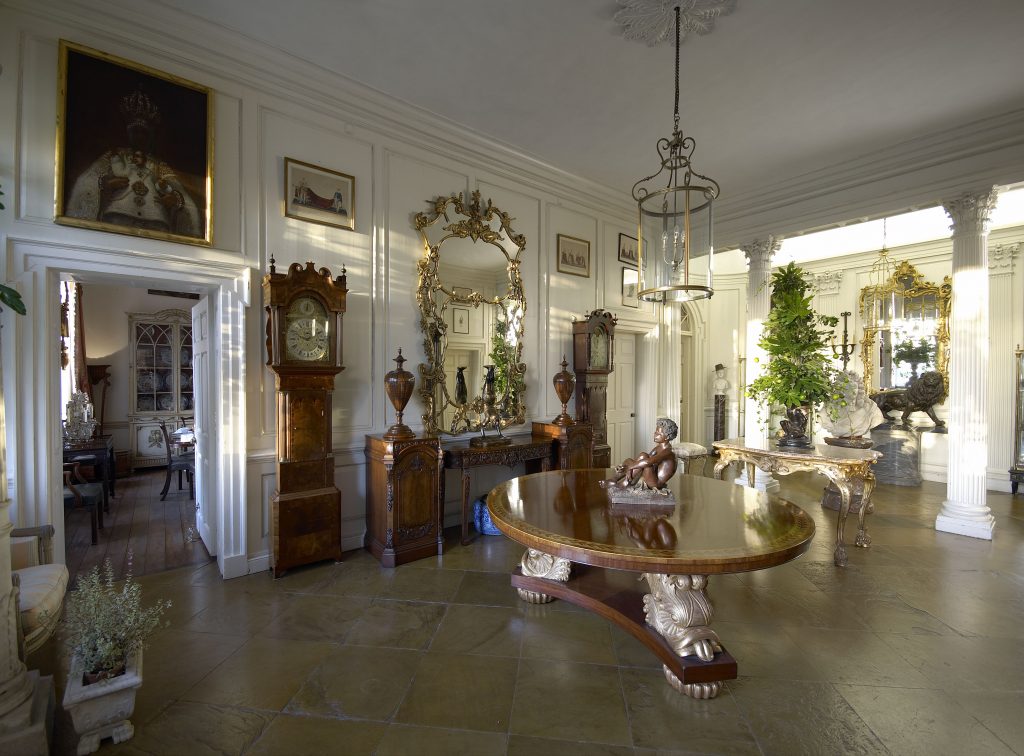
A SALES AGENT CAN NEGOTIATE PREFERENTIAL TERMS
Many moons ago I attended the Florida State Bar Trust and Estate Conference in Palm Beach where a well-respected auctioneer presented. Before departing, the last thing he shouted into the microphone was, ”And remember, everything is negotiable.” No truer words have ever been spoken by a professional in the auction industry! Auction houses typically assess a myriad of fees including a standard commission which is often coupled with transportation fees, insurance fees, photography fees, marketing fees and other miscellaneous expenses such as a buy-in fee if the object goes unsold. While auction houses provide an integral service to collectors, their profit stream comes from both the buyers and the sellers. Depending on the value, quality, quantity, rarity or even provenance associated with the object being sold, auction partners may be more likely to negotiate their sales fee structure to secure the consignment. This is particularly true when the opportunity presents vetted property, but also when the consignment is in a competitive scenario meaning other qualified auction partners are pitching for the same project. The more coveted the consignment, the easier it is to negotiate preferential terms. Due to the significant value and volume of sales The Fine Art Group oversees annually in the auction market, our leverage with the auction houses exceeds what individuals typically can achieve on their own.
DON’T GO IT ALONE IN THE FINE ART MARKET
The fine art market is often considered an opaque industry with little transparency. When potentially selling a single object or an entire collection, it is imperative to bring in an INDEPENDENT representative to protect the seller in the auction sales process. In addition, a firm such as The Fine Art Group can provide insight and added benefits that a sole proprietor cannot. This often includes a diverse roster of experts and specialists who can share insight to not only the fine art market but also the furniture & decorative arts market, jewelry, timepieces, luxury couture, books & manuscripts, as well as many other more nuanced collecting categories. With this knowledge comes unique insight into the overall market and knowledge of recent public and private sales to which a collector may not be privy. This industry expertise can provide a collector with a unique perspective in determining what sales strategy would best benefit the desired outcome, including potentially holding an object until market conditions improve or even considering a charitable contribution when appreciation impacts capital gains taxation. Simply due to a sales agent’s leverage in the market, auction commissions and fees can be further discounted. Divestment of high-value collectibles often takes place during moments of disruption and can be stressful for consignors who are unfamiliar with the process. A sales agent can not only expertly negotiate commissions and fees but also organize logistics and oversee the entire sales process from lot placement to marketing strategy, contributing to the overall success of the sales process.
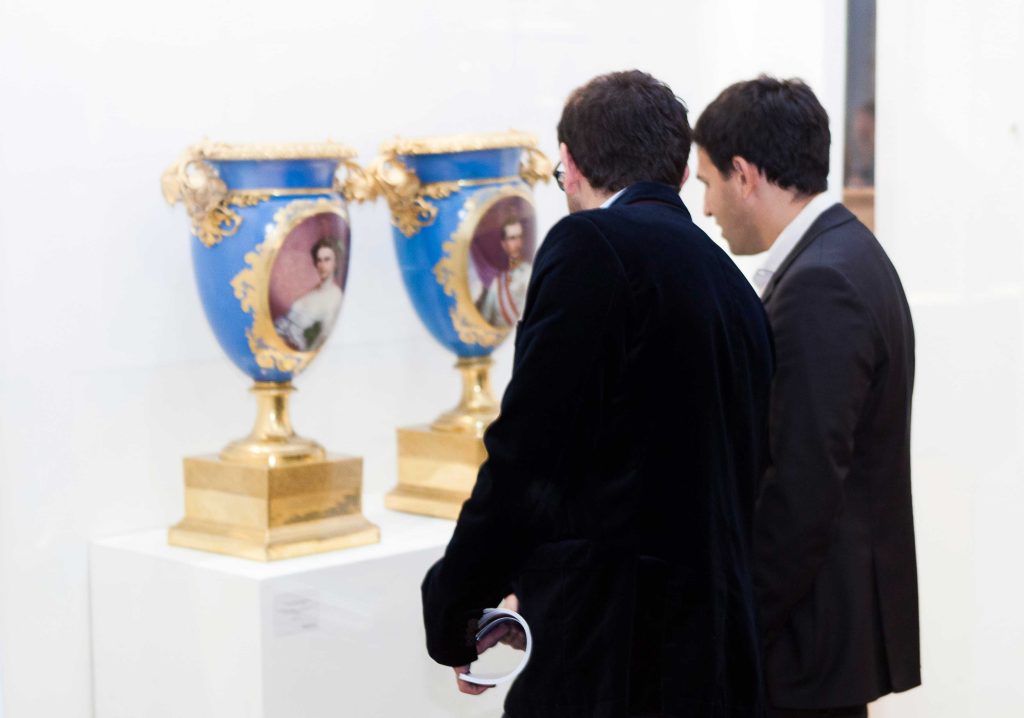
A SUCCESSFUL FORMULA FOR SELLING AT AUCTION
Selling at auction can achieve tremendous results. The key to success is the following formula: Choose the right venue, negotiate the correct deal and monitor the process from beginning to end. The Fine Art Group’s experienced staff is poised to provide any advice throughout the process.
FURTHER READING
- Don’t Go It Alone: Let Us Be Your Auction Sale Advocate
- Are You a Tangible Asset Fiduciary? Topic #1
- What to Hang on Your New Walls: The 5 Golden Rules
OUR SERVICES
Offering expert Advisory across sectors, our dedicated Sales Agency Team combine strategic insight with transparent advice to guide our clients seamlessly through the market. We always welcome the opportunity to discuss our strategies and services in depth.
The Scoop #8 – September 20th, 2022
In our 8th edition of The Scoop, we discuss inflation’s impact on the crypto markets, NFT sales volumes, and spotlight the founder of Art Blocks.
CRYPTO MARKETS
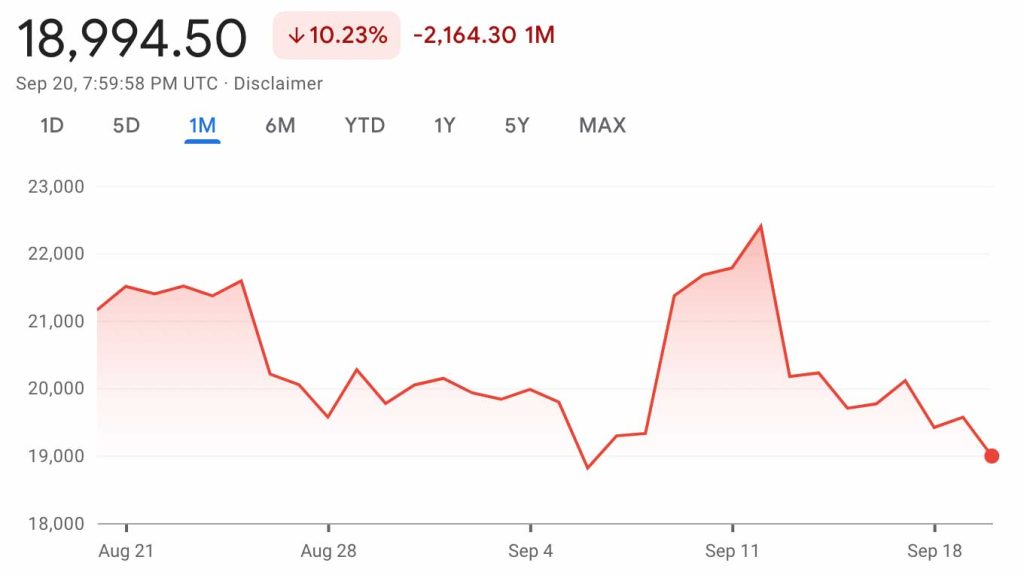
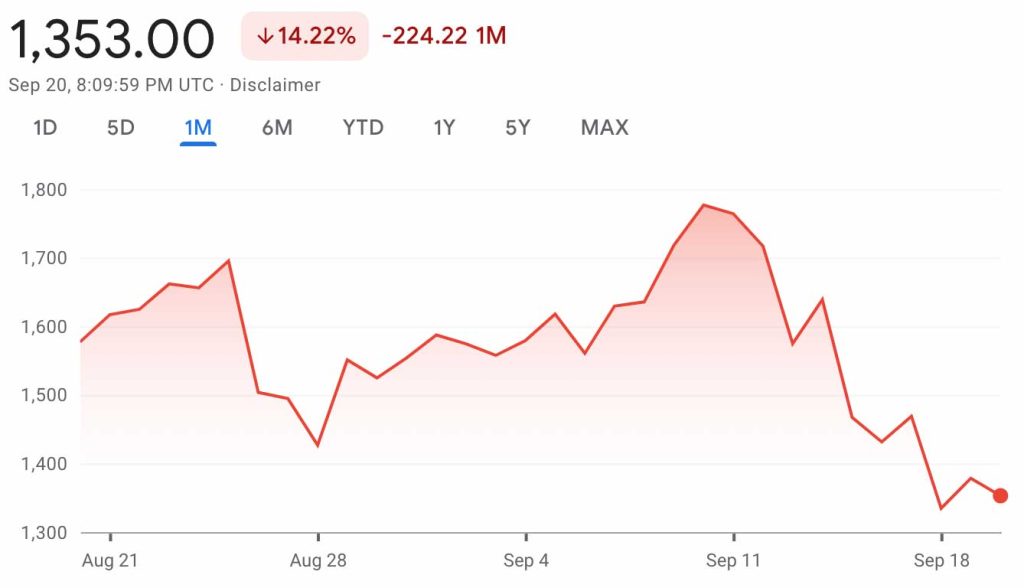
CRYPTO COMMENTARY
The bumpy road continues for markets across the board as the Fed has indicated that interest rates will remain elevated for the foreseeable future. Markets reacted negatively to Jerome Powell’s comments that the Fed would continue to raise rates as high as needed and keep them there “for some time” to tame inflation, which is running much higher than its 2% target. Traditional equities and cryptocurrencies alike saw increased volatility after the remarks, and more is expected as Fed President John Williams pushed back on the idea that there would be a rate cut next year.

Looking at the Fed funds rate level over the last 10 years shows the healthy and natural rate hike cycle begun in 2016 to keep the right balance between growth and potential inflation. As COVID, a black swan event, hit the global economies in an unprecedented way in early 2020, the Fed slashed the interest rates back to near zero (shaded area on the graph). While the short term pain from the pandemic was blunted, this allowed for inflation to grow very quickly unchecked as the economy reopened. It’s worth noting that despite the spate of recent hikes, the Fed funds rate is now at the levels we saw just before the pandemic. Although inflation slowed down a bit in July to an 8.5% increase year-over-year in CPI, we are still at levels not seen in the last four decades.
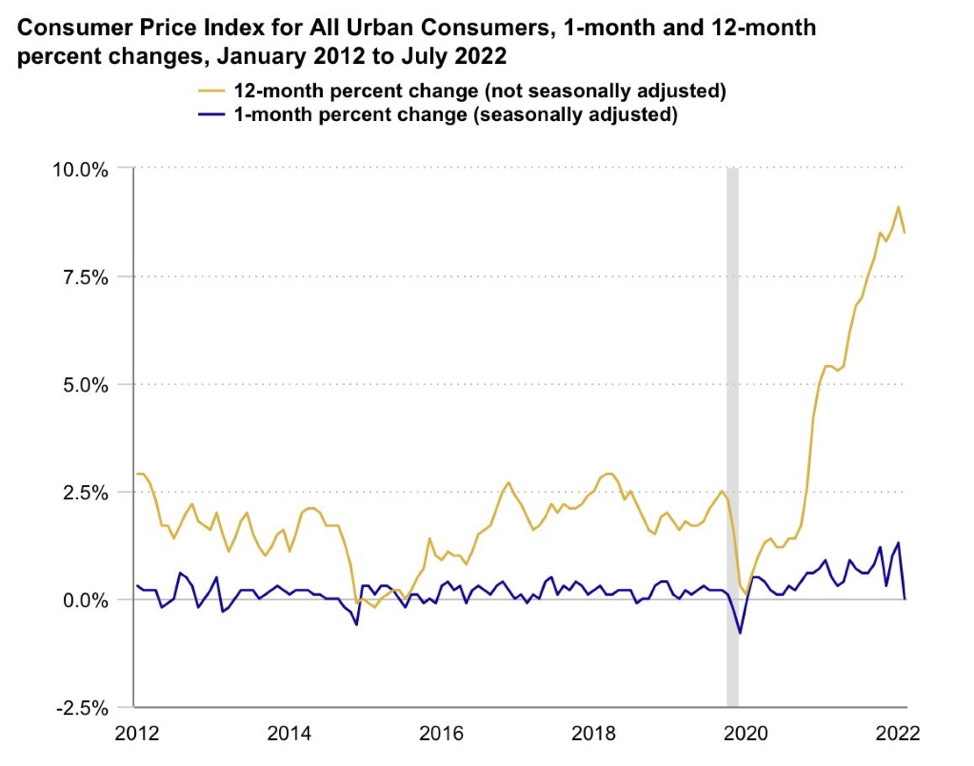
The reactions of the market aren’t a surprise, and since many investors are still fleeing risk, the major indexes and tokens could continue their descent. We are still teetering on the edge of a recession, with the next six months being crucial for a “soft” landing.
WHAT’S THE BUZZ?
In the world of NFTs, what is the single most important piece of security? A seed phrase.
A SEED PHRASE
- Every seed phrase consists of 12-24 random words pulled from a list of 2,048.
- If access is lost to your wallet or it is deleted, you must have the seed phrase to restore your access.
- There is no one to call for help if a seed phrase is misplaced; all of the contents in the wallet are lost.
- The seed phrase must be kept secure at all costs!
- One of the largest phishing scams seen in this space is malicious actors pretending to be from Metamask or Coinbase and asking people to verify their seed phrase. Nobody from any of those companies will ever ask for it.
NFT BLUE-CHIP COLLECTIONS
Top 5 NFT Collectible Collections
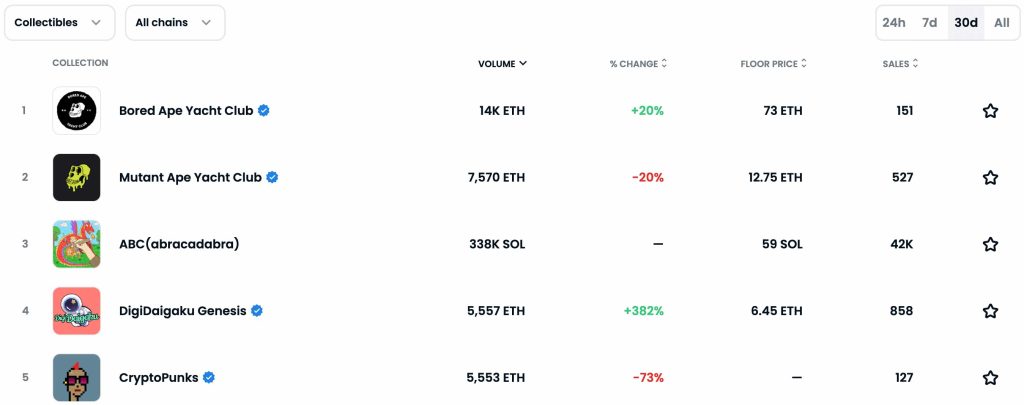
Top 5 NFT Photography Collections
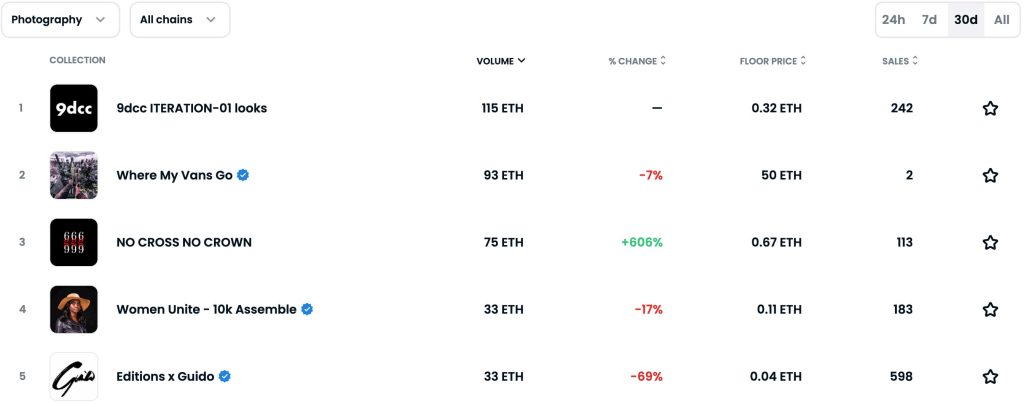
NFT COMMENTARY
While the usual suspects are in the top NFT charts, there is nothing usual about the trends that we’ve been seeing in the NFT markets. We’re still seeing the consolidation behind Bored Apes, Cryptopunks, and the Art Blocks collections, which is expected for the blue chips. But the real story is in the number of NFTs being sold and overall cash volumes.
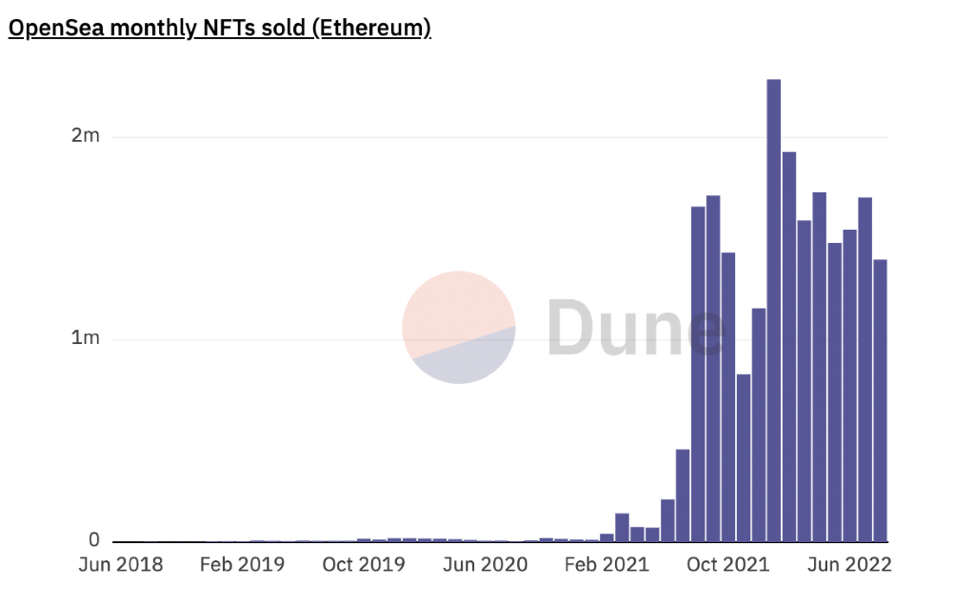
Looking at total number of NFTs sold, summer was business as usual. The count of NFTs being sold looks healthy and doesn’t hint at a market downturn. The data points to the number of sales being in its expected range.
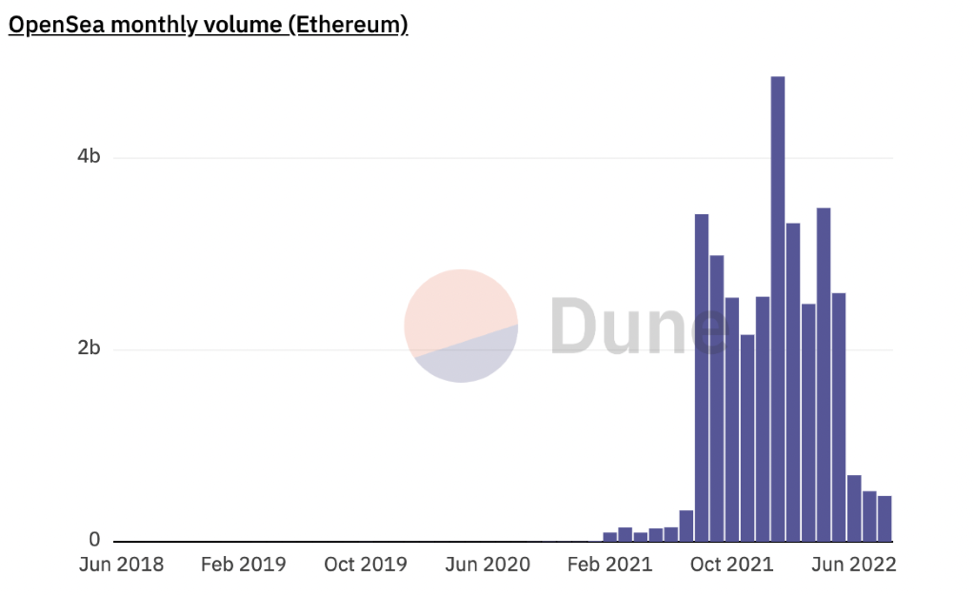
When we look at the overall monthly volume on the Ethereum network (measured in USD) we’re seeing a summer slowdown with considerably less currency changing hands. We understand it’s a bear market for crypto and that’s a factor, but this leads us to believe it really is a bear market for NFTs as well. People are still buying NFTs but aren’t paying as much. The average price per NFT has dropped considerably.
The most recent test for the secondary NFT market came from the Sotheby’s MaxStealth Collection sale on Sept. 14. It was the first NFT single-owner live auction, and it opened the door for this concept moving forward. Pieces from XCOPY, Pak and Beeple were included in the 26-lot offering. The timing of the auction was a bit puzzling. With the unease in the global economy and crypto space, it seems that Sotheby’s bet the quality of NFTs on offer would offset the pressure from the larger macro-economic picture. We were able to derive a lot about the health of the high-end NFT market from this sale, especially how valuations are tracking in a bear market. With several pieces withdrawn or unsold it seemed that demand did not meet the Sotheby’s sales expectations – the sale achieved an aggregate sale price of $1.7m against a total pre-sale low auction estimate of $2.9 million. Lots above the $100,000 mark seemed to struggle with the exception of the XCOPY piece, while mid-value lots from Beeple, Hackatao/Coldie, and Alessio De Vecchi sold above their respective high estimates.
NFT ARTIST SPOTLIGHT
Erick “Snowfro” Calderon
The man, the myth, the legend behind Art Blocks has been a force in the NFT space since he sold his Cryptopunks to fund his new project. Since its inception, Art Blocks has become the epicenter of generative art in the NFT space. From Fidenzas to Ringers, some of the most pivotal collections have found a home under the Art Blocks umbrella.
Before Art Blocks, Erick dabbled in painting and other forms of colorful art yet never sought out gallery representation. However, when it comes to generative art, his Chromie Squiggles have become one of the grails in the NFT space since their launch. Working in 3D rendering software called Three.js, Erick adapted one of the sample scripts – a rigid squiggly line consisting of squares – and smoothed the lines out and added movement, rainbows and translucency. Most recently, the Chromie Squiggles popped up on tickets for VeeCon, a conference hosted by Gary Vaynerchuk who is also a Web3 entrepreneur. Rumor has it they’ll soon be on a football jersey somewhere in the EU, bringing further exposure to this new breed of art.
After making a splash in 2021, Art Blocks announced a partnership with Pace Verso in June 2022 bringing two of the most prominent players in Web3 and contemporary art together. This venture will open the doors to new exhibitions and collaborations between the traditional art world and the NFT space. Each has a lot to bring to the table, so we’re looking forward to seeing where this goes.
NFT & CRYPTO NEWS
- It’s Time to Separate NFTs from Digital Art
- Starbucks “Odyssey” is getting on the blockchain
- Bored Ape NFT Band to Make Music with Beyoncé-, Timberlake-Linked Productions
- Pace Verso and Art Blocks Detail First-Ever NFT by A.A. Murakami
- An A.I.-Generated Picture Won an Art Prize. Artists Aren’t Happy.
- LG Bringing NFT Art to your TV
- Olafur Eliasson launches a virtual reality work and NFT commissioned by MetaKovan- the man who paid $69.3m for ‘that’ Beeple
- Is it a Pyramid Scheme if they tell you it’s a Pyramid Scheme?
- The Merge is coming
READ PAST ISSUES OF THE SCOOP
Disclaimer
Information in this report is compiled from a number of sources; The Fine Art Group does not make any representation or warranty, express or implied, as to its accuracy or completeness. The Fine Art Group shall not be liable for any errors or inaccuracies in this report or for any actions taken in reliance on information or opinion contained in this report. The Fine Art Group are under no obligation to update or keep current the information provided herein. Information in this report is provided solely for information and marketing purposes and is not to be construed as investment advice or a personal recommendation, nor as legal, tax, regulatory, accounting or any other specialist technical advice. Capital is at risk when buying or selling the types of assets discussed in the report, and any decision to do so is solely at the risk of the buyer or seller. Prior performance is not indicative of future results. Neither The Fine Art Group nor any of its directors, officers, employees, or agents accepts any liability for any loss or damage arising out of the use of all or any part of this document or reliance upon any information contained herein.
The report contains hyperlinks or references to third-party advertising and websites other than The Fine Art Group website. Any such hyperlinks or references are provided for your convenience only. We have no control over third-party advertising or websites and accept no legal responsibility for any content, material or information contained in them. The display of any hyperlink and reference to any third-party advertising or website does not mean that we endorse that third-party’s website, products, or services. Your use of a third-party site may be governed by the terms and conditions of that third-party site and is at your own risk.
We remember our Sovereign Queen, Elizabeth II,
with enormous gratitude, great pride and a profound sense of loss.
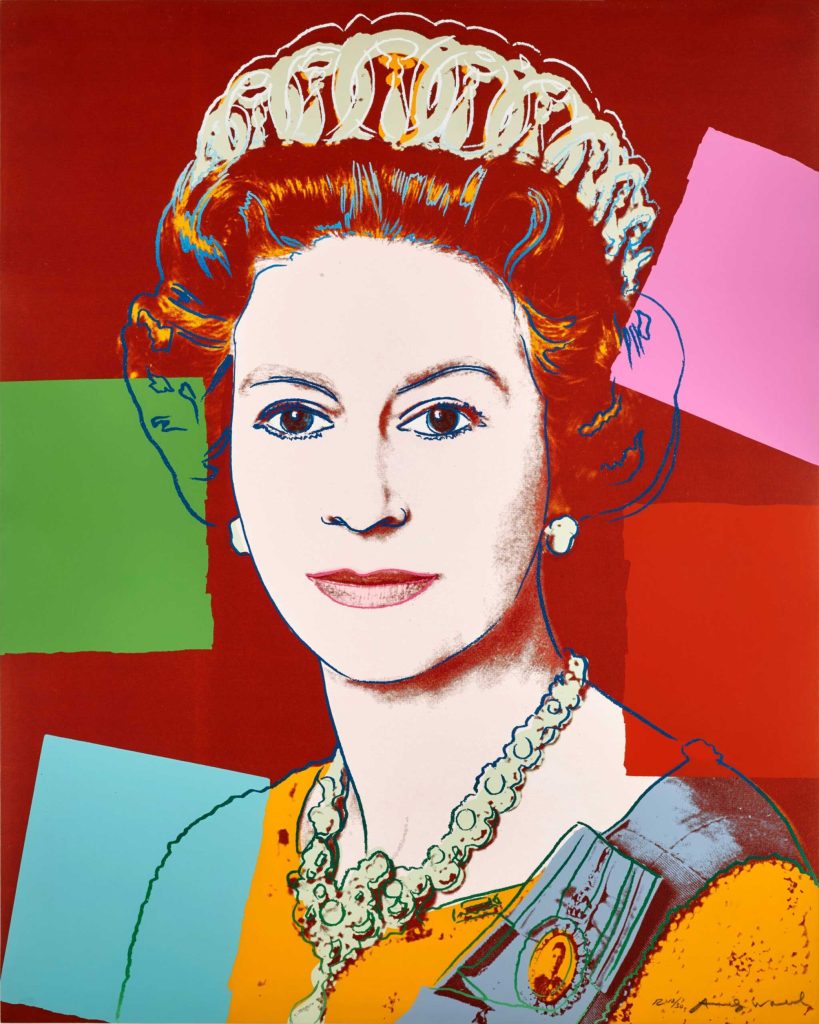
Henry Little Presents to TheMerode
TheMerode is hosting a special evening September 19th, where they’ll survey recent auction results and forthcoming sales to spotlight key trends in the art market, as well as discussing important developments in the gallery scene and reviewing the year’s art fairs.
Auctions, galleries and art fairs have been humming with business in 2022. Will that continue in the face of widespread economic uncertainty? And what will the coming year in the global art market bring? Will Paris take London’s crown in Europe? Will overheated market segments cool? And what can we expect in the major autumn auctions?
Hubert d’Ursel, Director Benelux, has the pleasure to introduce industry expert Henry Little, Director of Art Advisory, who will offer his predications for the months to come, giving guests of TheMerode a chance to be up to date and ahead of the curve for the new market season.
FURTHER READING
- Spring Art Market Recap 2022
- Market Update Live Webinar: The State of the Art, Collectibles & Jewelry Market
Originally published on Tiger21.com, September 2, 2022
Market Insights for Fine Art Investment
Spring Art Market Recap: Top Sellers, Auction Records and Trends for the Future
While you might expect that Covid’s impact and an increase in inflation would deter art buyers at auction, Spring 2022 auctions in New York City demonstrated just the opposite.
With around $2.5 billion worth of art sold in the span of two weeks, the widely anticipated New York May Marquee Sales wrapped up the spring season, achieving new auction records and concluding the first half of 2022 at their highest level ever. Of the total sales, Post-War and Contemporary art accounted for 48.8%, while Impressionist and Modern art comprised 51.2%.
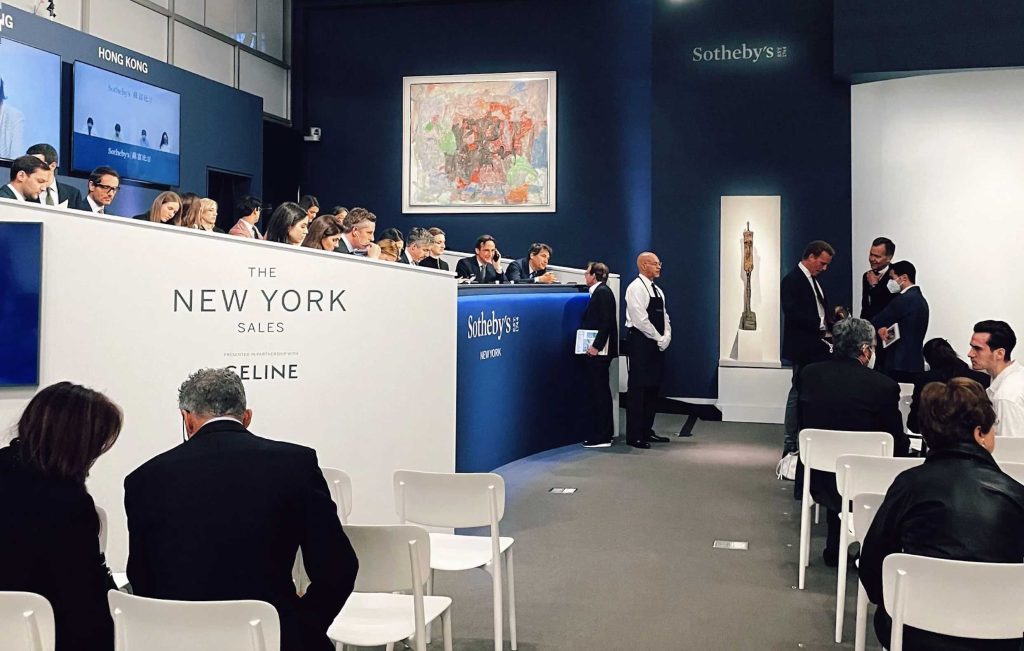
The Boost of the Season: Single-Owner Collections
The sales included major single-owner collections, which accounted for 38.5% of the total evening Marquee Sales, and raised a total of $795.3 million. Included were The Ammann Collection with landmark Post-War and Contemporary pieces; the Bass Collection of leading 19th– and 20th-century artworks by Claude Monet, Edgar Degas, and Mark Rothko, among others; and the Macklowe Collection, which became the most valuable single-owner collection ever sold at auction. The collection of Rosalind Gersten Jacobs and Melvin Jacobs showcased works from Dada and Surrealist movements.
New York Art Auction Records
Despite a backdrop of economic and political uncertainties, the evening sales set new auction records and strong sell-through rates. The headlining work from the Ammann Collection, Andy Warhol’s Shot Sage Blue Marilyn (1964), sold for $195 million with buyer’s premium[1], becoming the most expensive 20th-century artwork ever sold at auction, while Man Ray’s Le Violon d’Ingres (1924) achieved $12.4 million with premium, setting a record for the most expensive photograph sold.
Phillips had the most successful sale in its history. The sale was mainly driven by the 1982 Untitled by Jean-Michel Basquiat, which reached $85 million with premium, becoming the most expensive artwork ever sold at Phillips. The Marquee Sales set numerous artist records and saw a continuous rise in prices for artworks by young contemporary artists. Separate evening sales were dedicated to 21st-century art with works by female artists making up more than half of the lots.
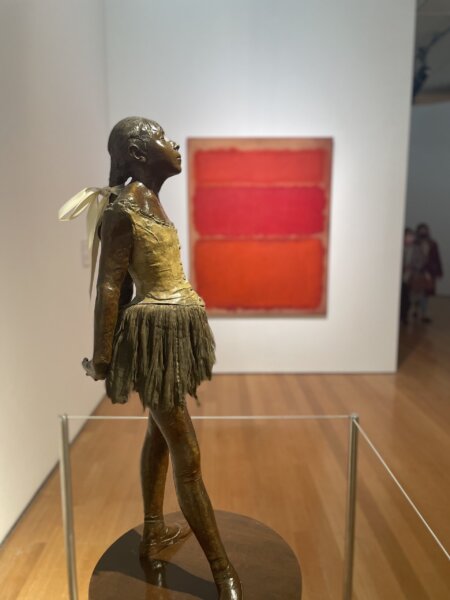
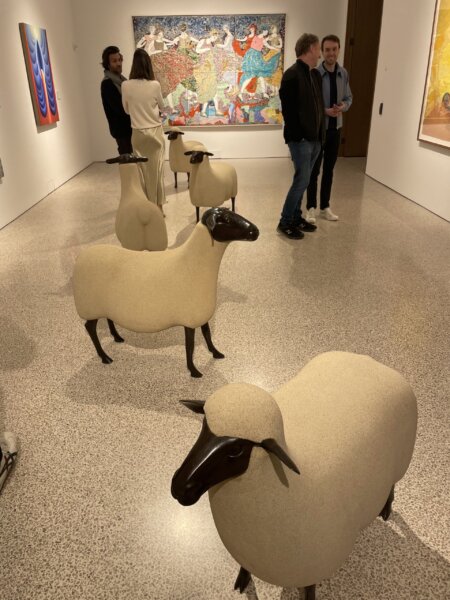
Fine Art Investment: Looking Ahead
With a strong start in the first half of 2022, the auction market is preparing for the upcoming fall months. There will be a number of important single-owner collections available, including the Paul G. Allen Collection and the Ann & Gordon Getty Collection at Christie’s. Together with Frieze London in October and Art Basel Miami in December, the art market is expected to see a busy fall season.
As advisors to many collectors who are looking to invest in fine arts and acquire art as an asset, we feel that continuing to collect during periods of uncertainty may present advantages. With a potential recession in the coming months and various economic and political factors currently strengthening the U.S. dollar across Europe and the UK, an increased focus on asset acquisition might be expected, particularly in the art world.
FURTHER READING
- Don’t Go It Alone: Let Us Be Your Auction Sale Advocate
- Salma Shaheem Discusses the Growth of Fractional Art Investment with Spear’s
- Protect Your Investments While Divesting Tangible Assets
[1]In addition to the winning bid for a lot at auction, known as the hammer price, auction houses charge buyers an additional fee known as a buyer’s premium, which is calculated as a percentage of the hammer price. Source
Morgan Long, Managing Director of The Fine Art Group, spoke with Barron’s about Christie’s sale of the Paul Allen Collection, what masterpieces she hopes to see for sale in November, and what this might mean about the health of the upcoming auction season.
Click here to find out more and read the article in full.
The approaching end of summer heralds not only the arrival of chillier weather, but a new wave of international art fairs. As the first fall since 2019 without lockdowns and covid restrictions, one can be sure the art world will be gearing up for another busy run of fairs in the next few months.
We have selected some of our top picks from around the globe. Be sure to look out for some familiar faces from The Fine Art Group’s Advisory Team if you drop by.
SOUTH KOREA
Seoul
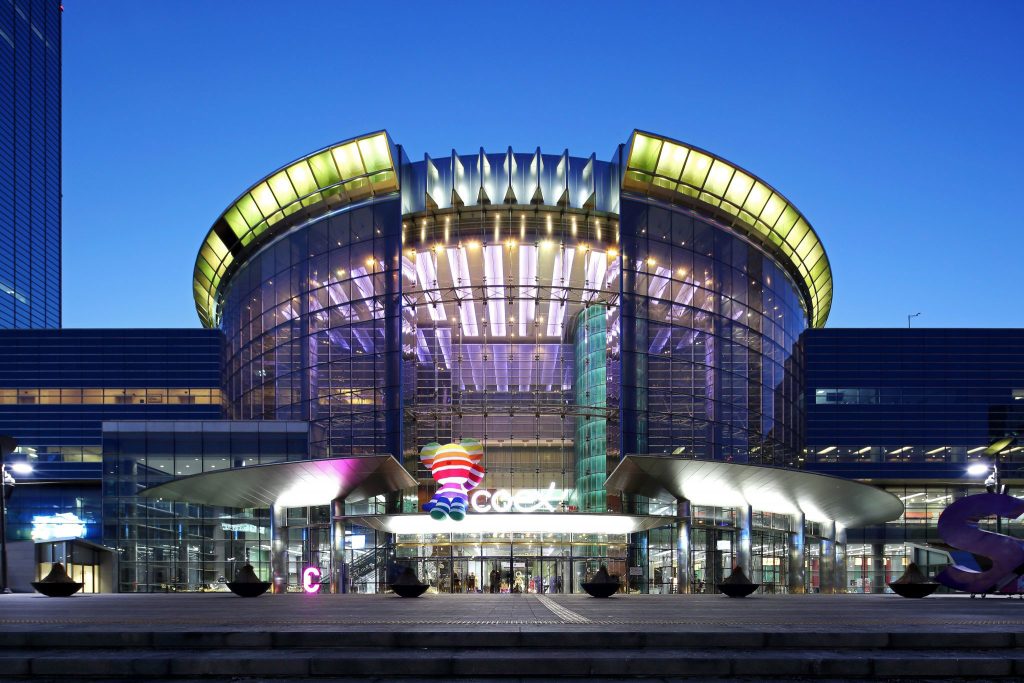
KIAF Seoul
VIP – September 1-2, 2022
September 3-6, 2022
Frieze Seoul
VIP – September 2, 2022
September 2-5, 2022
Possibly the most anticipated art fair of the year, Frieze announced in May 2021 that they would open their fifth edition in Seoul, which is rapidly becoming the new hotbed of the global art market. Featuring over 100 galleries, it will take place alongside KIAF Seoul, South Korea’s first international art fair which will celebrate its twentieth anniversary this year. Like Frieze London, Frieze Seoul will also have a Frieze Masters section, as well as Focus Asia, a new feature showcasing young emerging Asian artists and galleries.
UNITED STATES
New York City
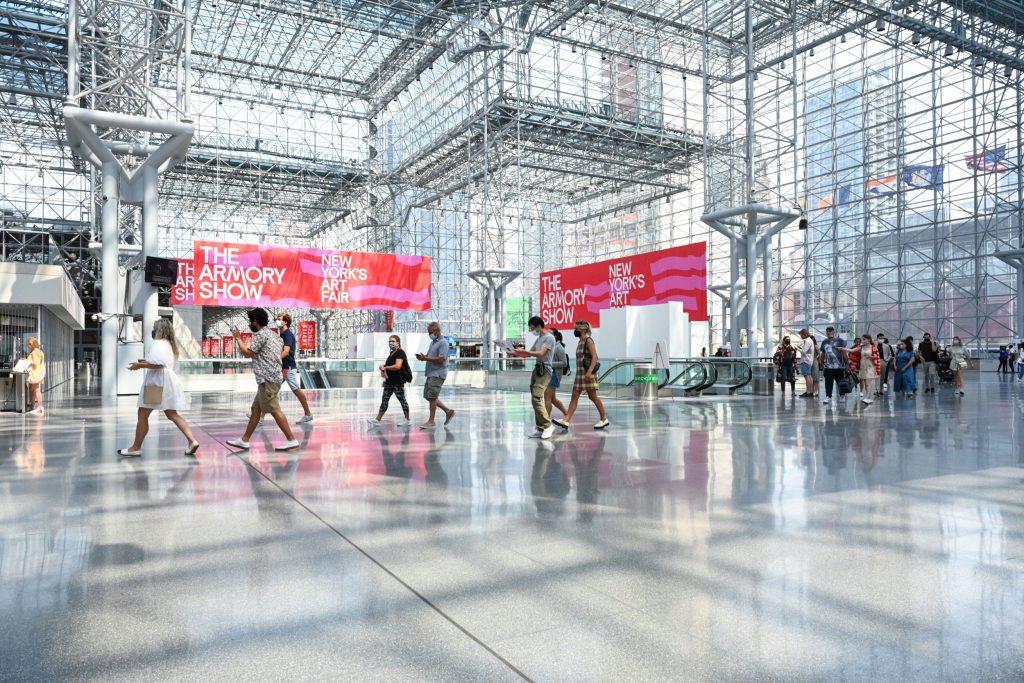
The Armory Show
VIP – September 8, 2022
September 9-11, 2022
Founded in 1994, the fair is located near the Chelsea gallery district in the Javits center. The first go-to event of New York’s fall art season, it will feature over 240 international galleries from over 30 countries. Its 2022 Platform section will also showcase a series of large-scale installations entitled Monumental Change. Co-ordinated by Tobias Ostrander, curator of Latin American Art at the Tate London, it will examine the current and controversial debate around public monuments.
Miami

Art Basel Miami Beach
VIP – November 29-30, 2022
December 1-3, 2022
While December may seem very far away, Art Basel Miami is the important bookend of what will surely be an exciting fall art season. Running off the back of the November New York sales, Art Basel Miami 2021 drew much attention for its inclusion of NFT galleries as exhibitors, as well as a partnership with blockchain Tezos, where visitors were encouraged to mint their own NFT. In the aftermath of the cryptocurrency market crash and fall in the NFT market, it will be interesting to see how techno-friendly the fair is this year.
UNITED KINGDOM
London
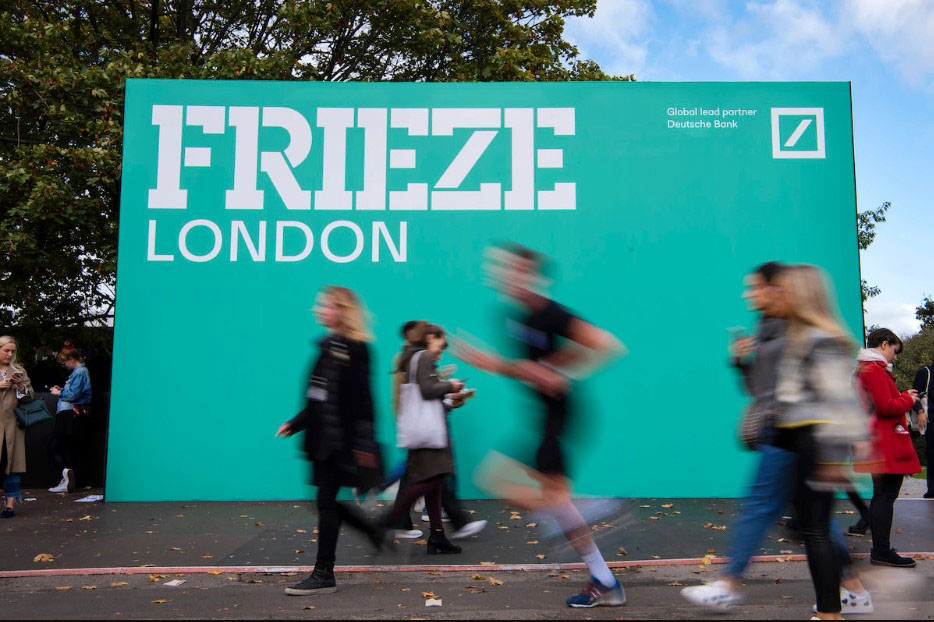
Frieze London & Frieze Masters
VIP – October 12, 2022
October 12-16, 2022
Frieze’s inaugural London fair returns for its 19th edition, its first event’s since the UK government officially lifted all Covid restrictions. Set in Regent’s Park, it will also mark the first Frieze London since Victoria Siddal stepped down as global director. The 2022 Frieze Artist Award, which received submissions focused around sustainability, was recently awarded to emerging British Artist Abbas Zahedi. Having graduated from his MFA just three years ago, Zahedi will create an installation by the entrance of the fair, which will host a series of live activations within its structure.
FRANCE
Paris
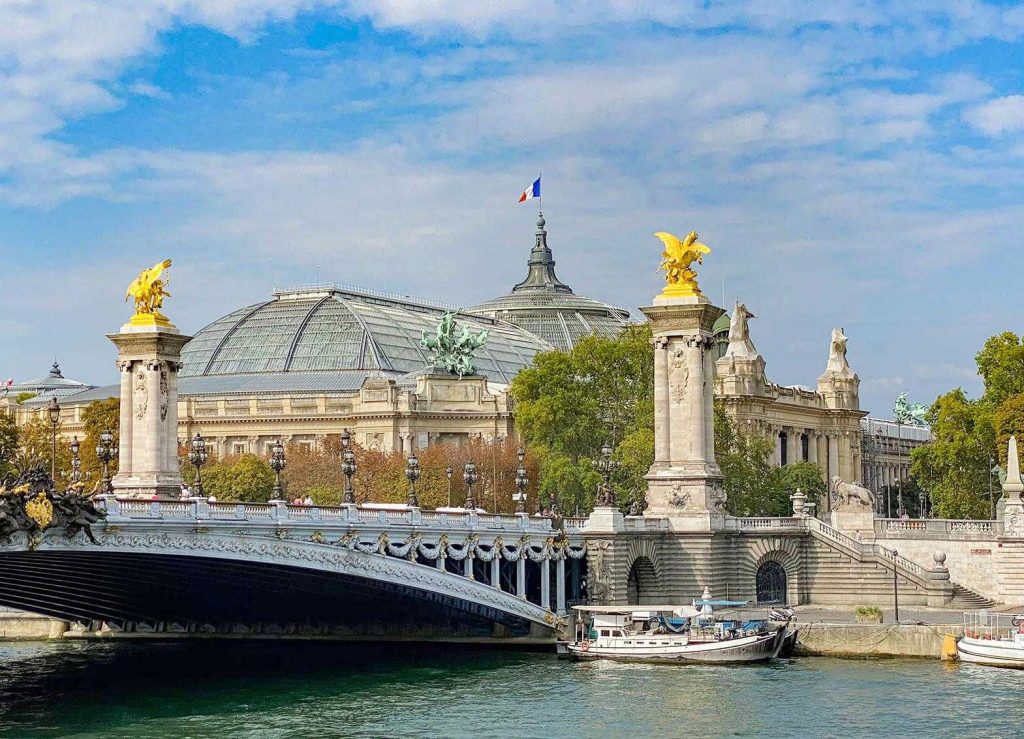
Paris+, par Art Basel
VIP – October 19, 2022
October 20-23, 2022
One of the biggest stories to hit the art world this year was the announcement of Art Basel’s new edition in Paris. Ousting prestigious French fair, FIAC, from its October slot at the Grand Palais, Paris +, signifies a major turn of events in the fair landscape. Including a Sites sector dedicated solely to artistic projects happening within the city, this newest Basel takeover is seen by many to signify the rise of Paris as a prominent market center in the wake of Brexit.
FURTHER READING
THE SCOOP #7 – August 15th, 2022
In our 7th edition of The Scoop, we cover the stabilizing markets, Blackrock partnering with Coinbase, airdrops, and the conclusion to Damien Hirst’s The Currency experiment.
CRYPTO MARKETS
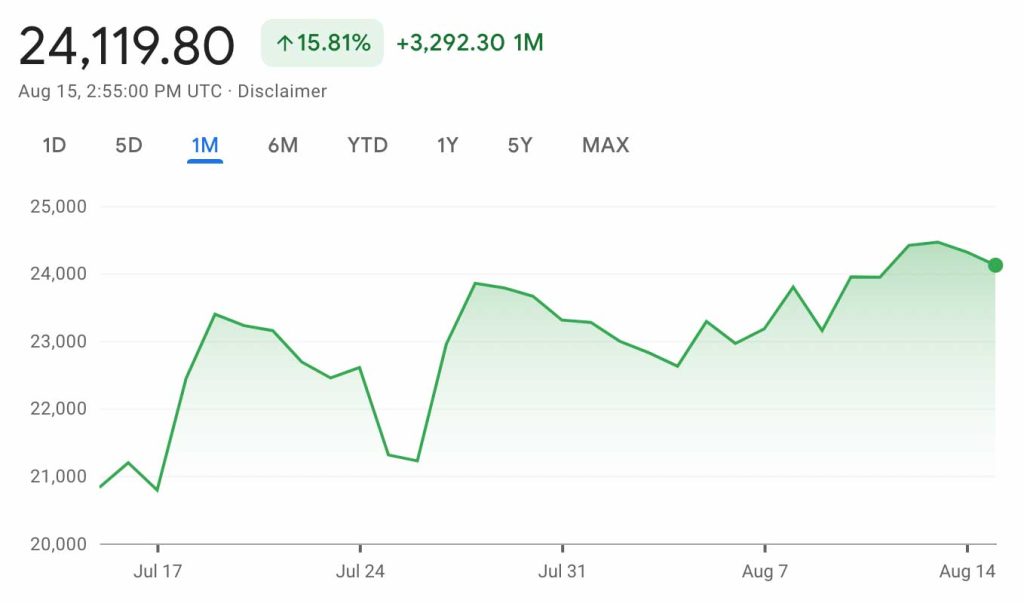
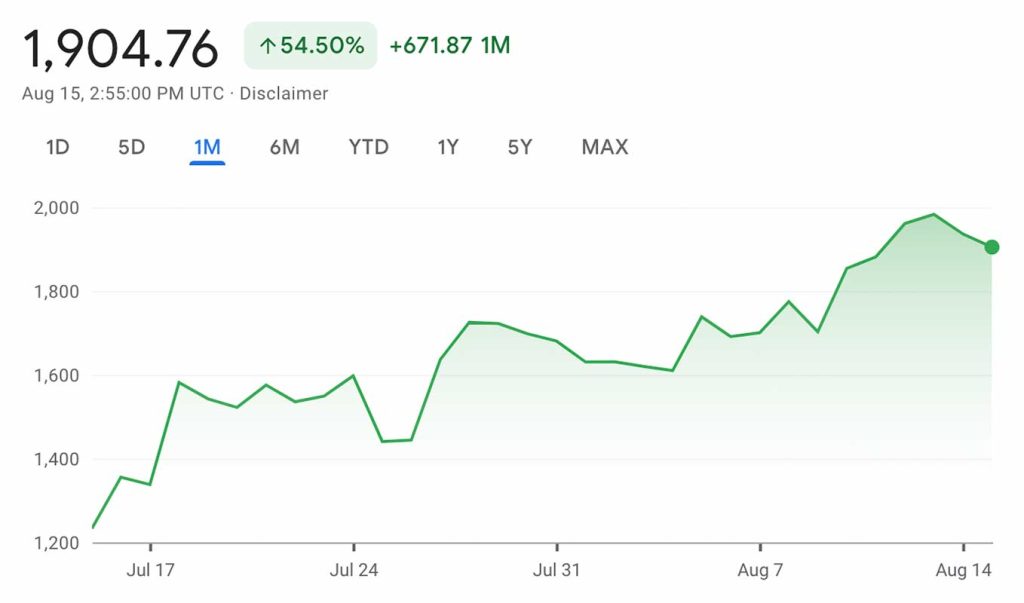
CRYPTO COMMENTARY
With the bounceback in traditional equity markets over the last couple of weeks, Bitcoin and the broader crypto markets have seen some stability while the crowd seems split as to whether the worst is behind us. The flow of bad news and lender defaults has slowed to a trickle, but many seem to have a bad taste in their mouth from the recent market washout.
There is some good news though, as Blackrock and Coinbase have agreed to a partnership that would allow crossover for Blackrock clients to trade and manage crypto in-house. The agreement combines Blackrock’s Aladdin service with Coinbase Prime so institutions will have full control of their holdings in one place. The scale that Blackrock brings to this partnership sent Coinbase shares up 44% intraday but closing the day only 10% up.
Amid rising interest rates, geopolitical tension, recession fears and a broader market selloff, this news is a breath of fresh air for a market that was slipping underwater. What this does on a larger scale is show that Wall Street’s appetite for crypto adoption is growing. More institutional adoption may be just what crypto needs to grow in price, maturity, and stability. Now that the biggest fund manager in the world is on board, who will be next?
WHAT’S THE BUZZ?
Imagine looking in your wallet one day and finding a new piece of art from one of your favorite creators. How did it get there? An airdrop.
AIRDROP
- Airdrops are distributions of NFTs, tokens or cryptocurrency to a Web3 wallet address
- Use cases include marketing, additional perks for collectors, or showing proof of attendance
- They are often viewed as “dividends” for owning certain NFTs
- In many scenarios, creators use this tool to connect with their collectors. For example, devoted collectors of Daniel Arsham’s Eroding and Reforming collection on Nifty Gateway will be airdropped an exclusive 11th NFT if they collect all 10 that were released
NFT BLUE-CHIP COLLECTIONS
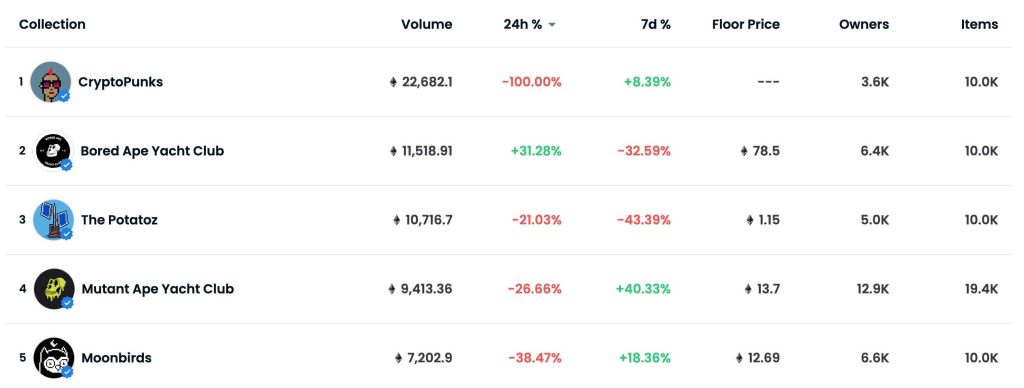
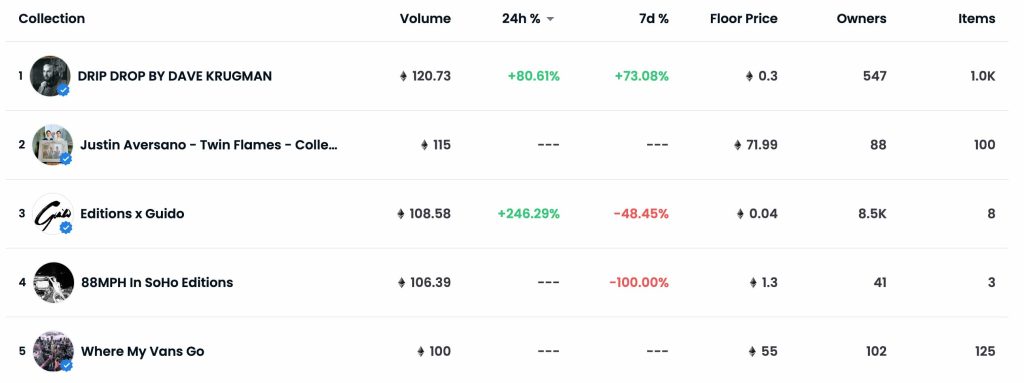
NFT COMMENTARY
The recent rise in the value of Ethereum has led to a stabilization in floor prices, but we’re still seeing slower volume on OpenSea and other major marketplaces. In the next month or so we’ll be able to see if this was just everyone on summer break or if this is the new normal.
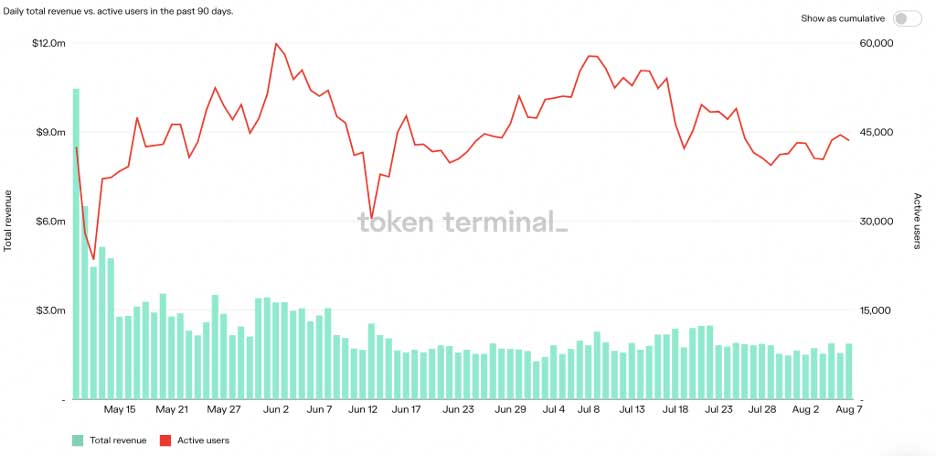
While volumes and values have been treading water not all the metrics have done the same and we are still seeing growth in adoption. The total number of active users was up 2.2% over the last 90 days in a promising sign that this platform is still onboarding new collectors.
In the bigger picture, there have been some conspicuous entries to the NFT market. In the social media world, Meta is working its way towards integrating NFTs into its popular Instagram platform so collectors can show off their pieces and creators can market their work. Major League Baseball is now giving away digital collectibles at their games; ticketholders can claim their NFTs with creative group Candy, introducing a vast audience to Web3. And last but not least, high fashion has jumped into NFT trends with Tiffany’s releasing NFTiffs, which are NFTs valued at $50,000 but paired with custom CryptoPunk avatar pendants. There are some differing opinions which Tiffany’s will have to contend with, but it doesn’t seem like they’re planning on backpedaling. Brands will have to watch how they manage their image in a whole new way moving forward.
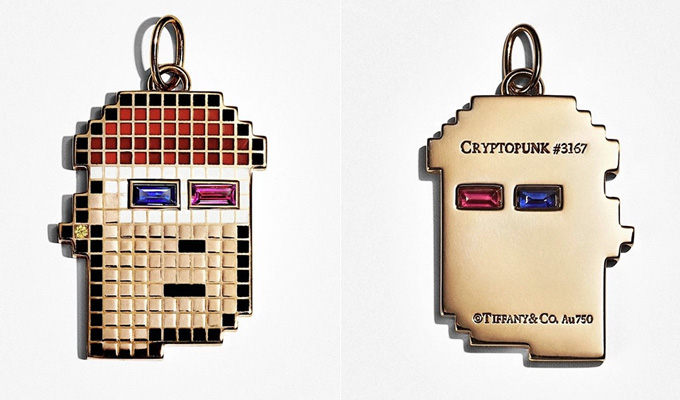
NFT ARTIST SPOTLIGHT
Damien Hirst
He is no stranger to the art world, but he was an early adopter in the NFT world. Damien’s experiment has literally caught fire. About a year ago when he released his collection, The Currency, he gave collectors an ultimatum about how they would ultimately get to keep their art. Each NFT was matched to a physical piece and at the end of the first year they had to decide which they would keep: the physical piece or the NFT. The one not chosen would be burned.
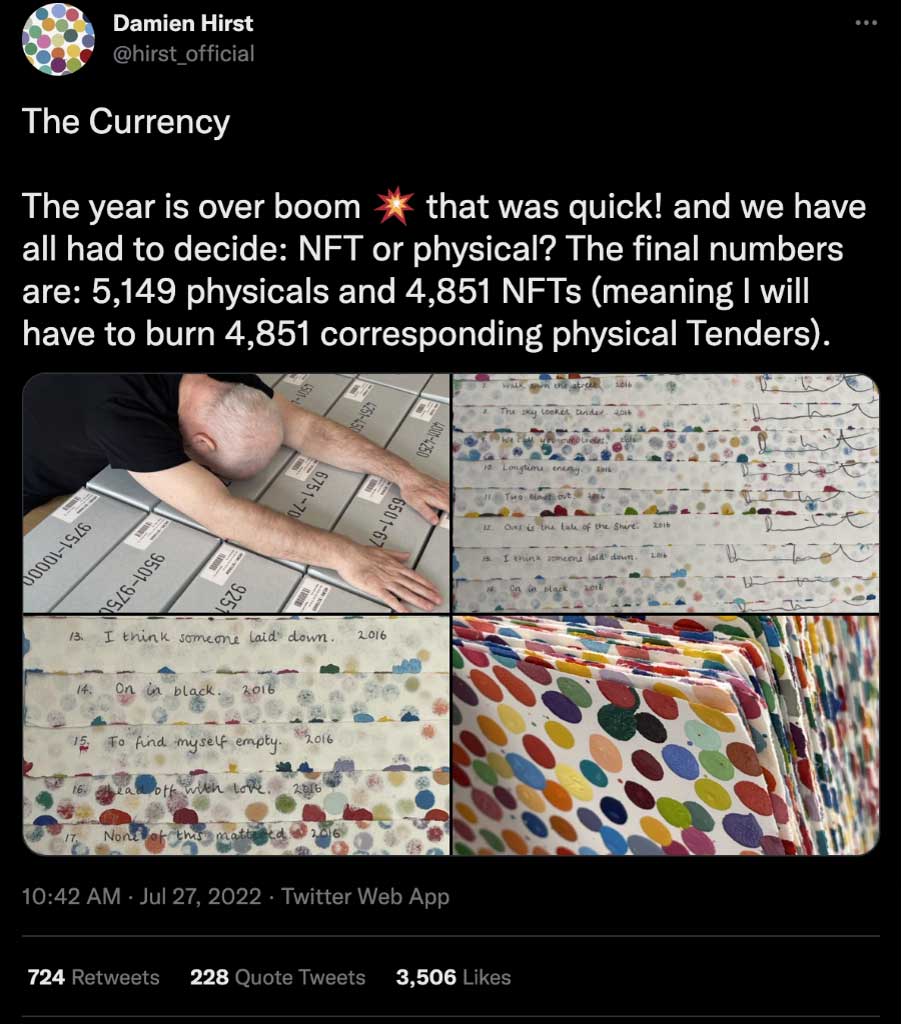
It was not a surprise to the art world that the physical pieces were preferred, but what did raise an eyebrow was how slim the margin was. It wasn’t as lopsided as many expected — 51% chose the physical pieces and 49% picked the NFTs. Perhaps the most difficult decision was for the artist himself. He had to make a choice on his 1,000 pieces and opted for the NFTs on all of them. He churned on the decision for quite some time but laid it all out in a Twitter thread on how keeping them as NFTs would be the next logical step, saying he has “no idea what the future holds, whether the NFTs or physicals are going to be more valuable or less. But that is art! the fun, part of the journey and maybe the point of the whole project. Even after one year, I feel the journey is just beginning.” We’re with you Damien.

NFT & CRYPTO NEWS
- Pearson considers move to NFTs for future book sales
- “CryptoDickbutts” sales surge “for the culture”
- SOL NFTs hit new $1 Billion high
- Metawashing: Are we seeing Greenwashing 2.0?
- OpenSea tweaking it’s stolen item policy
- Prada’s Virtual Fashion Show turns heads in China
- The 20 Top-Selling NFT Artists
- Tiffany & Co. “NFTiffs” sell out in 20 minutes
- NFTs will be regulated like cryptocurrencies in EU
- Polygon Team reports apps on the network surge by 400%
READ PAST ISSUES OF THE SCOOP
Disclaimer
Information in this report is compiled from a number of sources; The Fine Art Group does not make any representation or warranty, express or implied, as to its accuracy or completeness. The Fine Art Group shall not be liable for any errors or inaccuracies in this report or for any actions taken in reliance on information or opinion contained in this report. The Fine Art Group are under no obligation to update or keep current the information provided herein. Information in this report is provided solely for information and marketing purposes and is not to be construed as investment advice or a personal recommendation, nor as legal, tax, regulatory, accounting or any other specialist technical advice. Capital is at risk when buying or selling the types of assets discussed in the report, and any decision to do so is solely at the risk of the buyer or seller. Prior performance is not indicative of future results. Neither The Fine Art Group nor any of its directors, officers, employees, or agents accepts any liability for any loss or damage arising out of the use of all or any part of this document or reliance upon any information contained herein.
The report contains hyperlinks or references to third-party advertising and websites other than The Fine Art Group website. Any such hyperlinks or references are provided for your convenience only. We have no control over third-party advertising or websites and accept no legal responsibility for any content, material or information contained in them. The display of any hyperlink and reference to any third-party advertising or website does not mean that we endorse that third-party’s website, products, or services. Your use of a third-party site may be governed by the terms and conditions of that third-party site and is at your own risk.





